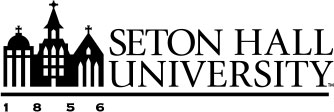
Decode the Future
Friday, April 19, 2024
Unveiling the communication toolkit – strategies for leaders to thrive in the ever-changing landscape of work.
The future of work is a topic leaders are talking about. Part of that conversation includes globalization, a diversified workforce and technological advancements that continue to present questions about workplace environments and how best to manage them.
At the core of these conversations is the role that communication will play as it intersects with interpersonal, organizational and digital interactions among employees, management and other stakeholders.
Consequently, organizations are becoming more complex as they consider the role that communication plays in organizational success. Leaders occupy a unique role in influencing organizational outcomes. However, the degree of success relies largely on the leader’s communication competencies, intelligences and strategies for interactions, and how these need to evolve to meet the future of work.
To this end, organizational leaders should be aware of some key communication competencies, and an understanding of communication in business environments is required as leadership plans for the evolution of work.
Communication Competency
Communication, as a word, is pervasive and frequently taken for granted. However, communication is also complex. The communication process consists of seven key elements: the sender, message, receiver, channel, feedback, context and noise.
The sender and receiver of the message are the individuals exchanging the communication. The message is what is being communicated or shared between them, and the channel is the tool used to carry the messages.
Feedback is the message sent to the initial sender, and context is the setting in which communication occurs. Noise is anything that impedes a message from being understood. If one of these factors is changed or manipulated, the communication process is also changed. Therefore, each factor has a set of competencies associated with it.
Leaders occupy the roles of sender and receiver across many contexts as they interact with management, employees and organizational stakeholders in business meetings, boardrooms and external settings.
Leaders also send verbal and nonverbal messages to each stakeholder they interact with in each context. Verbally leaders construct motivational messages, formal presentations and vision statements. Nonverbally, they convey additional meaning through facial expressions, body movements hand gestures and vocal patterns (e.g., rate of speech, pronounced pauses and vocal slurs, to name a few).
Leaders also communicate using many different channels ranging from digital devices (e.g., mobile tools) to in-person exchanges. They also receive a significant amount of feedback from internal and external audiences. Consequently, leaders spend a significant amount of time listening to different constituencies as they interact with others and try to understand everyone’s concerns or perspectives. This aspect of the communication process is critical, given the role that feedback plays in leadership decision-making. Therefore, leaders must be good listeners and speakers across communication platforms.
A leader’s effectiveness is contingent upon communication competency, which refers to their understanding and application of communication knowledge and skills to different contexts. Unlike information sharing, communication is built upon the fundamental principle of shared understanding.
In other words, the leader, as both a sender and recipient of messages, must operate from the goal of understanding everyone’s message as well as to be understood. Without a shared meaning of interactions, communication has not occurred.
For leadership, communication competency translates into the leader’s ability to present messages in a clear, organized and relevant way to ensure that stakeholders understand what is conveyed. This action takes careful reflection on who the leader is communicating with, what they are communicating about, the desired outcome of the interaction, and how the leader will respond to others providing feedback about the message.
It also means that leaders must seek to understand the other person’s perspective, requiring them to ask questions and to seek clarification in areas where they lack shared understanding of a phenomenon or topic. Each of these communication behaviors has skills associated with them. As leaders contemplate the future of work, they should also consider how communication will evolve and change.
Communication Technology Competencies
Leaders have many different communication tools available to them, such as audio/video conferencing, email, mobile phones, production tools, mass media outlets like cable or news venues, social media platforms like LinkedIn or YouTube and websites.
Each of these tools requires leaders to determine which is best for communicating a specific message to a specific audience — if the tool fits the context for what is being shared, how the tool impedes or promotes shared understanding and the desired outcome of the message shared.
Because communication technologies are ever evolving, it is important that leaders stay up to date on training and understanding how these tools help or hinder their ability to communicate effectively with others and to create shared meaning.
Various communication technologies have different capabilities and require different communication knowledge and skills. When leaders select a technology, they should develop the communication skills that match the device.
For instance, videoconferencing is frequently used to conduct organizational meetings. When using this tool, leaders should attend to audio/video functions, background filters, camera placement, headroom, lighting, the information to be screen shared and tailor their verbal and nonverbal messaging to be consistent with video/audio tools.
Without a sensitivity to all the elements, a leader’s credibility, judgment and reputation become questionable. Ineffective use of the technology impedes the leader’s message, resulting in noise and no or limited shared meaning being achieved.
A sensitivity to leadership’s organizational interactions via various tools will help grow their communication technology competencies as they plan for the future of their workplaces.
Cultural Communication Competencies
Today’s organizations consist of diverse employees who vary in terms of accessibility, age, culture, ethnicity, race, religion, sex, sexual identity and orientation, socio-economic status and technological capability, among many others.
Employee diversity is often a strength and can be leveraged with effective leadership and communication awareness focusing on inclusivity. Given changing employee demographics, leaders must understand the evolving nature of language, how audiences with whom they interact in multiple settings. And as organizations evolve to meet future worker expectations, cultural competencies will also continue to evolve.
Conclusion
Leaders are confronted by many organizational challenges ranging from competition to employee relations to information management to technological advancements. However, the greatest interpersonal, organizational and technological challenge confronting leaders today involves communicating effectively.
With an attention to communication elements, technologies and cultural competencies, leaders can identify areas where they need more training to develop the skills necessary to effectively interact with various organizational members and stakeholders today. Effective communication behaviors assist leaders with meeting organizational goals through interpersonal and stakeholder relationship building.
Therefore, as conversations continue about the future of work, leaders should also attend to how they will need to enhance their communication competencies in the future.
This article originally appeared in the Spring 2024 issue of In the Lead magazine, from Stillman School of Business’s Department of Management and the Buccino Leadership Institute. The bi-annual magazine focuses on leadership perspectives from the field of health care, with content that is curated from leaders across the industry who share lessons learned from real-world experiences.
Categories: Business, Science and Technology

